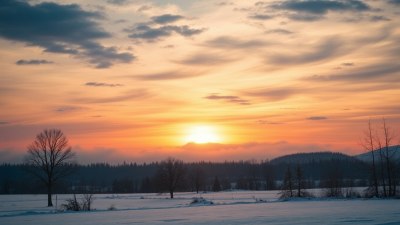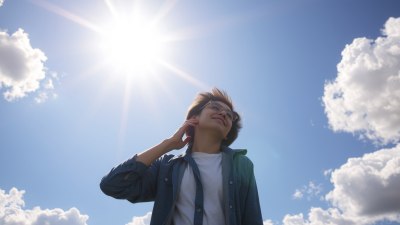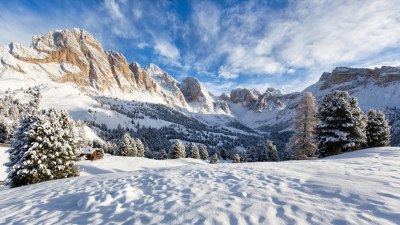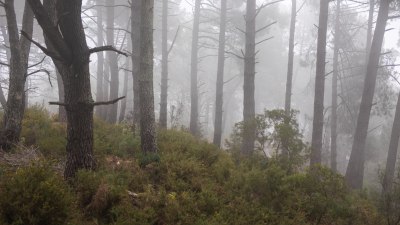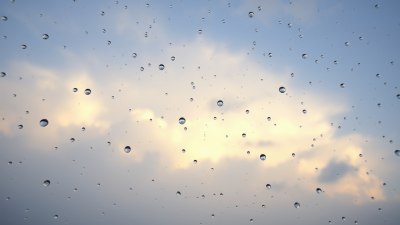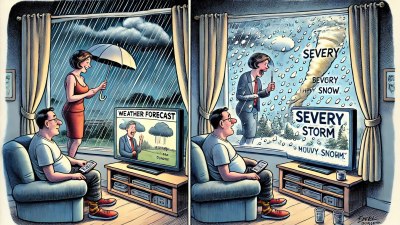What Is a Polar Vortex
Explore the polar vortex phenomenon, its causes, impacts, and how it affects weather patterns globally.
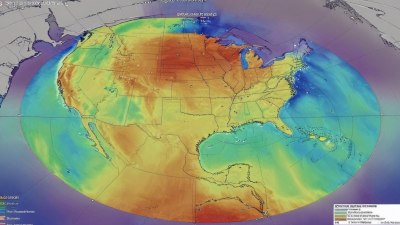
This image was created with the assistance of Freepik
The polar vortex is a large cyclone located around the poles of the Earth. This phenomenon plays a significant role in shaping the weather patterns we experience across the globe, especially during winter months in the Northern Hemisphere. Understanding what a polar vortex is, how it forms, and its implications is crucial for better weather forecasting and preparedness.
Defining the Polar Vortex
The polar vortex consists of a band of strong winds circulating in a counterclockwise direction around the Arctic. It essentially traps the cold air within the polar regions but can become unstable and lead to drastic weather changes in mid-latitude areas when it weakens. The concept of the polar vortex has gained notable attention due to the extreme weather events that can be traced back to its influence.
Formation of the Polar Vortex
The polar vortex is typically strongest in the winter months. During this time, as the sun's rays are less direct in the polar regions, the cooling of the troposphere leads to a stronger temperature gradient between the polar areas and the warmer equatorial regions. This temperature difference strengthens the polar vortex, making it more defined and stable. Conversely, when the polar vortex weakens, this can result in cold Arctic air spilling southward into lower latitudes, causing severe winter weather.
How the Polar Vortex Affects Weather
When the polar vortex is strong, it keeps the cold air contained near the poles, leading to milder weather in lower latitudes. However, a weakened polar vortex can result in extremes, including unseasonably cold temperatures, snowstorms, and extended periods of freezing temperatures in regions unaccustomed to such weather. This has become increasingly evident in recent years as climate change has led to record-breaking winter events.
Recent Trends and Climate Change
Research suggests that the polar vortex may be influenced by global warming. Specifically, warmer temperatures in the Arctic can weaken the polar vortex, leading to more frequent outbreaks of cold air in populated regions. This connection between the polar vortex and climate change is still being studied, but it highlights the complexities of our planet's weather systems and how they interrelate.
The Role of Stratospheric Warming
Sudden stratospheric warming (SSW) is an event where the stratospheric temperatures in the polar regions rise sharply, leading to a disturbance in the polar vortex. This event can cause the polar vortex to split or weaken, allowing cold air to plunge southward. Such occurrences are crucial in understanding winter weather patterns and predicting the likelihood of cold snaps in mid-latitude areas.
Impacts of Polar Vortex Disruptions
When the polar vortex weakens or shifts, its impacts can be severe. The most profound effect is the intrusion of Arctic air into regions like the United States or Europe, leading to extreme cold spells, snow accumulations, and ice events. These conditions can pose risks to human health, transportation, and infrastructure, as residents face unprecedented weather conditions.
Regional Effects of a Weak Polar Vortex
In the United States, a disrupted polar vortex has been linked to drastic winter weather, particularly affecting the Midwest and the Northeastern states. The ‘Bomb Cyclone’ phenomena, characterized by rapid drops in atmospheric pressure and severe storms, may have ties to shifts in the polar vortex. Similarly, Europe can experience severe cold waves and snowstorms as a result of polar vortex disturbances impacting the jet stream.
Predicting Polar Vortex Behavior
Meteorologists have made strides in improving forecasts around the behavior of the polar vortex and its impact on winter weather. Advanced models and satellite observations assist forecasters in tracking changes in the polar vortex's strength, location, and structure, allowing for more accurate predictions of winter weather. Nonetheless, challenges remain, as meandering polar vortex patterns can make forecasting difficult, necessitating ongoing research and development in meteorological science.
Legislative and Safety Responses
In light of the growing challenges presented by extreme weather linked to the polar vortex, some regions have put forward legislative measures to mitigate the impacts. This includes investing in infrastructure resilience against extreme weather, enhancing emergency management systems, and encouraging community preparedness initiatives. For individuals, being aware of winter weather warnings and staying informed about potential weather impacts can improve overall safety during polar vortex events.
The Future of the Polar Vortex
As global temperatures continue to rise due to climate change, the polar vortex may undergo further changes. It is essential to remain vigilant in studying this atmospheric phenomenon, as its dynamics affect more than just weather patterns; they can also influence ecosystems, agriculture, and economies. Notably, understanding the polar vortex will be pivotal in adapting to changes in winter weather and its emerging patterns in a changing climate.
The polar vortex is a significant atmospheric phenomenon with wide-reaching impacts on global weather patterns. Understanding it requires a multi-disciplinary approach combining atmospheric science, climatology, and meteorology. As research continues to unveil the complexities of the polar vortex, it becomes increasingly vital for us to acknowledge the interconnectedness of climate systems and prepare for the unpredictable nature of our planet's weather.


